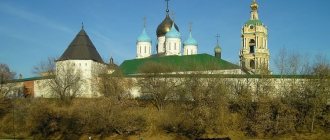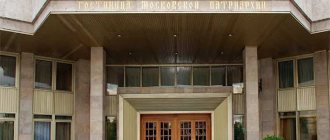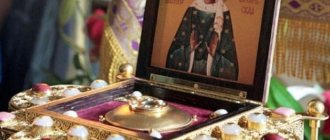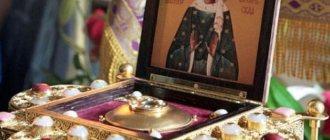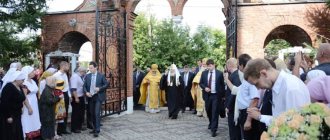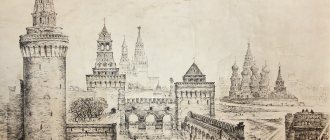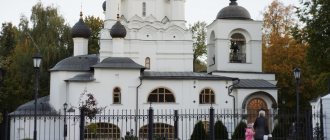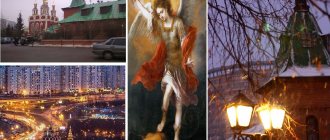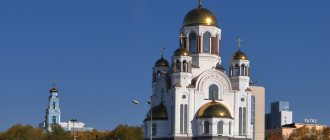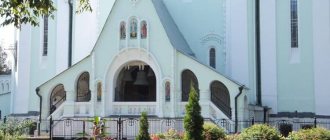The Orthodox Church stands out brightly in the vastness of Moscow's Red Square and is a famous monument of Russian architecture. The cathedral was erected on the special instructions of Tsar John IV in honor of the campaign against Kazan and the capture of the city. Next to the building there was a deep ditch, so the common people called the temple the Intercession on the Ditch.
The magnificent church unites ten chapels, some of them are consecrated in honor of the saints of the Russian Orthodox Church. Today, the grandiose structure is considered a UNESCO property and operates as a division of the history museum.
Sign of the era
It is a well-known fact that St. Basil's Cathedral in Moscow was built in honor of the annexation of the Kazan Khanate to Russia. This event was of key importance in the transformation of the Moscow principality into a powerful centralized state. The last stronghold of Tatar-Mongol power was defeated. This happened in October 1552, on the day of the celebration of the Intercession of the Blessed Virgin Mary. Construction of the temple began in 1555 and was completed five years later. For its time, the cathedral was the most grandiose building in Moscow. The height from the foundation to the base of the cross is 65 meters. The consecration of the cathedral took place in July 1561.
Exhibition in Podklet
On the first floor, or rather the basement, we saw beautiful restored icons. In fact, these are portable icons with which the procession around the temple took place.
Restored icons
The power of the basement structures is amazing - due to the fact that the temple was located on the “Ditch”, a powerful foundation was required. Since the Cathedral is quite old, restorations and replacement of bricks have been carried out several times. Dark bricks are old old.
Canopy in the basement
By the way, in the basement you can see a fragment of the colored dome of the church. It turns out that the domes are made of metal and covered with paint. As you know, metal is subject to corrosion, so restoration is carried out approximately every 20 years.
Dome fragment
The icon “Our Lady of the Sign” is a replica of the icon located outside the temple. Dating back to 1780.
Icon of Our Lady of the Sign
Secrets of construction
The chronicles have not preserved reliable information about the author of the project and the craftsmen who embodied it in stone. There are several versions about this. The officially accepted version states that St. Basil's Cathedral in Moscow was erected by a certain Postnik Yakovlev, originally from Pskov. Otherwise, this architect is called Ivan Yakovlevich Barma, nicknamed Postnik. There is also an opinion that the unique appearance of the temple was created by an unknown Italian master. There were precedents for this; craftsmen from Italy took part in the construction of many structures in the Kremlin.
Legend has it that the cathedral's architects were blinded upon completion of construction. Tsar Ivan, struck by the beauty of the temple, did not wish that something similar could be erected anywhere else. However, the chronicles indicate that Postnik, after the Moscow construction project, participated in the construction of the Kremlin in Kazan for several years. This is evidenced by the royal decree of December 15. 1555, commanding Postnik Yakovlev, among other masters, to go to this city.
The temple is a symbol of the daring of Ivan the Terrible
It was the pious medieval tradition that led to the fact that St. Basil's Cathedral in Moscow was built in memory of the military victory. This, however, does not reflect its full significance for the history of Russia. At the beginning of his reign, the young Tsar Ivan IV set ambitious goals for building a new state. It was he who first officially began to be called a king. Even under his grandfather, Grand Duke John III, a new doctrine of spiritual appearance began to emerge in Russia: Moscow is the Third Rome. Ivan the Terrible believed that Russia should unite various peoples and be their guide to Heavenly Jerusalem. This is precisely what, according to the royal customer, St. Basil's Cathedral in Moscow was supposed to express with its multitude of domes.
Internal structure of the cathedral
The design of the cathedral includes nine small temples. In accordance with church tradition, the layout of churches is strictly regulated. They are built in the shape of a cross, a ship or a circle. In plan, the cathedral represents an eight-pointed star - a symbol of life in the next century. The altars of the side churches are consecrated in honor of church holidays and saints, the days of celebration and veneration of which were marked by the most important stages in the conquest of Kazan and the Middle Volga region:
- the central chapel is dedicated to the Intercession of the Most Holy Theotokos;
- Troitsky - in the east;
- in the west - in honor of the Entry of the Lord into Jerusalem;
- in the north-west - in honor of Equal-to-the-Apostles Gregory the Great, the enlightener of Armenia;
- in the southeast - in honor of the Monk Alexander of Svirsky;
- in the southwest - in honor of the Monk Varlaam of Khutyn;
- in the northeast - in honor of St. John of Alexandria;
- in the south - St. Nicholas;
- in the north - in honor of St. martyrs Adrian and Natalia.
Later, two more chapels were added: in honor of St. St. Basil's and the bell tower with an altar dedicated to St. John of Moscow.
Improvements and changes
The temple on Red Square in Moscow did not immediately have its original appearance, but was modified several times. After the main construction it was constantly improved. According to the architects, the cathedral was completely white and built of white stone blocks, but this changed in the 17th century. Instead of white walls there are ornamental paintings.
Instead of a golden dome covering - decorative processing in its modern form. The complete solution to the color of the domes is not completely known. There are only assumptions that are based on the legend about Andrei the Fool, who is associated with the Feast of the Intercession of the Mother of God. In his dream he saw Heavenly Jerusalem in the form of a blooming garden.
Gradually all the details of the cathedral were improved without drastic changes in architecture. Wooden, unreliable tented buildings were replaced with stone ones, and the domes were made entirely of metal. Altars from the dismantled churches were moved to the basement of the cathedral, underground for safekeeping.
Thrones from churches “on the blood”, which were located on old places of public executions, were kept there. According to various sources, there were from 13 to 20 such thrones. At the same time, several thrones were transferred from burnt Moscow churches.
Several chapels are also renamed: at the request of a wealthy depositor, the Church of Cyprian and Justina is renamed the Church of her patron saints Adrian and Natalia, and the Church of the Three Patriarchs of Constantinople is now named in honor of the Patriarch of Alexandria John the Merciful.
These names will be fixed until the 20th century. Also, the iconostasis from the Kremlin church was transferred to the Church of the Intercession. A grass ornament is being added to the parapets and the interior decoration of the galleries and, in general, the cathedral is almost completing all restoration work.
The Trinity fire in 1737 almost completely destroyed the interior of the cathedral. Its restoration took a long time, since all of Moscow suffered then. Particular attention was paid to restoration in the period 1784-1786. At this time, the appearance of the cathedral was changed: the built-on Theodosius Church was dismantled.
Chapel of St. St. Basil's
A contemporary of Tsar Ivan the Terrible was an unusual person - a God-fearing young man from the outlying village of Elokhovo. In his youth, he left his home and wandered the streets of the capital. Vasily was awarded the gift of foresight from God. He constantly denounced the hypocrisy and lies of his fellow citizens, regardless of rank and class. Such people are popularly called holy fools or blessed ones. The Church honors them as saints who took upon themselves the feat of imaginary madness. Ivan the Terrible treated the blessed one very respectfully, received him in his chambers, and listened to his advice.
When Vasily died, he was buried in the cemetery of the Trinity Church near the defensive moat of the Kremlin, where St. Basil's Cathedral in Moscow was later built. The year the cathedral was created and the date of death of the saint, who took part in raising funds for its construction, mystically coincide. In 1588, Vasily, the fool for Christ's sake, was canonized by the Church. By order of Tsar Fyodor Ivanovich, a temple was built over his grave, which, in fact, was the tenth chapel of the cathedral. He gave the world-famous name to the entire sacred structure.
Interesting history facts
The cathedral, being more of a memorial than a utilitarian place for mass worship, on the days of great holidays was a huge altar. Worshipers gathered on Red Square, and the Execution Place served as the church pulpit.
In their original form, the domes had a helmet-shaped shape, classic for Russian temple architecture. They acquired their modern appearance much later, under Catherine II.
Napoleon, who captured Moscow, decided to dismantle the cathedral and move it to Paris. But in his position this was impossible. Out of weakness, the emperor decided to blow up the temple. When the gunpowder was already placed under the base and the fuse was set on fire, a sudden rainfall saved the shrine.
The second time the threat of death loomed in Soviet times, when Lazar Kaganovich, who led the plan for the reconstruction of the capital, proposed demolishing the temple and building a roadway in its place, convenient for holding demonstrations. The cathedral was saved from destruction by the famous Soviet restorer and architectural historian P.D. Baranovsky. One of the decisive arguments was that St. Basil's Cathedral in Moscow was built in memory of one of the greatest events in the history of the country.
Since 1991, the temple, while actually remaining a museum of world significance, is used jointly with the Russian Orthodox Church.
How to get there
As I mentioned earlier, the cathedral is located on Red Square. There are several ways to get there:
- St. Basil's Cathedral can be reached from the combined metro stations Teatralnaya, Ploshchad Revolyutsii and Okhotny Ryad, entering the city on Manezhnaya Square. You need to go around the Historical Museum, behind it there is a stunning view of Red Square, at the end of which you will see St. Basil's Cathedral. There is another way from the Kitay-Gorod metro station. Exit to the street. Varvarka and walk 15 minutes to the Bolshoi Moskvoretsky Bridge, which is next to Vasilyevsky Spusk.
- Buses and trolleybuses also go to the cathedral. You can learn more about Moscow transport, prices, opening hours here. The nearest stop is called “Red Square”, you can get there by bus 25. The rest will take you to the Teatralnaya Ploshchad stop; these are bus routes H1 (night), H2 (night), 12ts and 144ts. And to the stop “Metro Kitai-Gorod (Slavyanskaya Square)” trolleybuses 16, 45, 63 (24 hours a day) and buses N4 (night), H5 (night) and 158.
St. Basil's Cathedral in Moscow. Opening hours
The cathedral became an architectural monument immediately after the October Revolution in 1918. In 1934, St. Basil's Cathedral in Moscow received the status of a branch of the State Historical Museum. And today it is one of the objects of the grandiose Kremlin museum complex. Included in the register of UNESCO World Heritage Sites. On the days of Great Church holidays and patronal celebrations, divine services are held in its chapels.
The doors of the temple are open every day for visiting tourists:
- from November to April - from 11.00 to 17.00 (the ticket office is open until 16.30);
- from May to October - from 10.00 to 18.00 (the ticket office is open until 17.30).
Non-working days: Tuesday and first Monday of every month.
Address: 103012, Moscow, Red Square, building 2. Phone: +.
Restoration work in the mid-twentieth century
The temple on Red Square in Moscow became perhaps the first building that came under the protection and provision of the state. It was recognized as a world monument. Now the process of museumification has begun here - turning the temple into a museum display object. Services were officially terminated.
For the temple to fully transform into a museum, it needed to be completely restored, since the long years of revolution and devastation made it impossible to take care of the temple and led to its serious damage.
Its windows were broken and the roof was damaged, and in winter, some of the chapels of the temple were covered with snow and froze, not even allowing the doors to be opened. In the 1920s The cathedral was extensively renovated, and in 1923 its status was changed: it was recognized as a historical and architectural museum. Since that time, it has been constantly open to the public and closed only once, during the Great Patriotic War.
The cathedral was actively studied: for example, underground tunnels leading to the Kremlin and walled-up rooms were discovered in it. Additionally, it was discovered that the lower level of the temple was equipped with loophole windows. During the renovation process, these loopholes were covered with brickwork, which complicated the work.
The discovery developed the theory that the cathedral was equipped with cannons and, if necessary, battle could be fought from there. Then it became known that the lower basements were used as treasury storage and were equipped with doors, of which only hinges remained.
In 1929, the last liturgy was held in the Intercession Cathedral, after which the bells were removed and church services were finally banned.
The year 1930 almost became decisive for the ancient cathedral: Lazar Kaganovich presented Joseph Stalin with a model of the renewed city and square.
When he swept away the model of the cathedral from the model, proposing to remove it, Stalin said the legendary phrase: “Lazarus, put it in its place,” which saved the architectural relic from demolition. However, in 1936 a new threat of demolition loomed. Compared to the new city layout, it was located inconveniently and blocked part of the highway.
Restorer Pyotr Baranovsky refused to participate in the demolition of an ancient and important structure, and said in a telegram that he would blow himself up along with the temple, and after his arrest he was convinced to continue the work by the fact that the temple had already been blown up. If you believe the legend, then immediately after his release, after six months of imprisonment, he hurried to the Kremlin to make sure that the cathedral was not in danger.
Moscow. St Basil's Church. Photo
With the advent of photography, the Intercession Cathedral became the most popular image of the capital on printed products. The temple appears on postcards, calendars, postage stamps, advertising brochures and tourist guides. Every visitor to Moscow considers it his duty to take pictures against the backdrop of this monument.
Effective lighting and high-quality photographic equipment allow you to take exceptional photographs at night.
Excursions
The cathedral surprises not only with its colorful appearance, but also with excursions that museum workers prepare for visitors. The most interesting one that I visited with my younger sister was “The Wonderful Chapters of the Intercession Cathedral” for children from 7 years old. The cost of one ticket for a schoolchild is 450 rubles, a student + accompanying person is 550 rubles. Professional guides introduced the children to the history of the origin of the multi-colored domes of the cathedral. They talked a lot about decorative decoration and held a master class on drawing using the plasticine technique. My sister and I were pleased.
The museum conducts sightseeing and original excursions for schoolchildren and students. On the official website you can find excursion topics and sign up for them, or use an audio guide for an additional fee.
